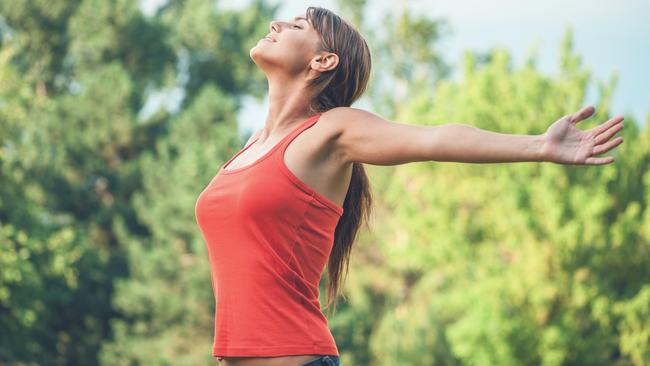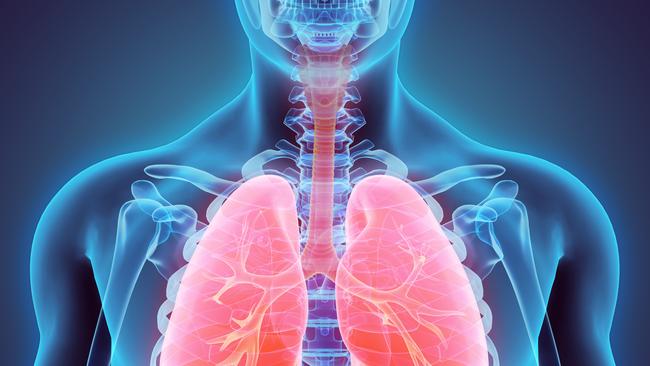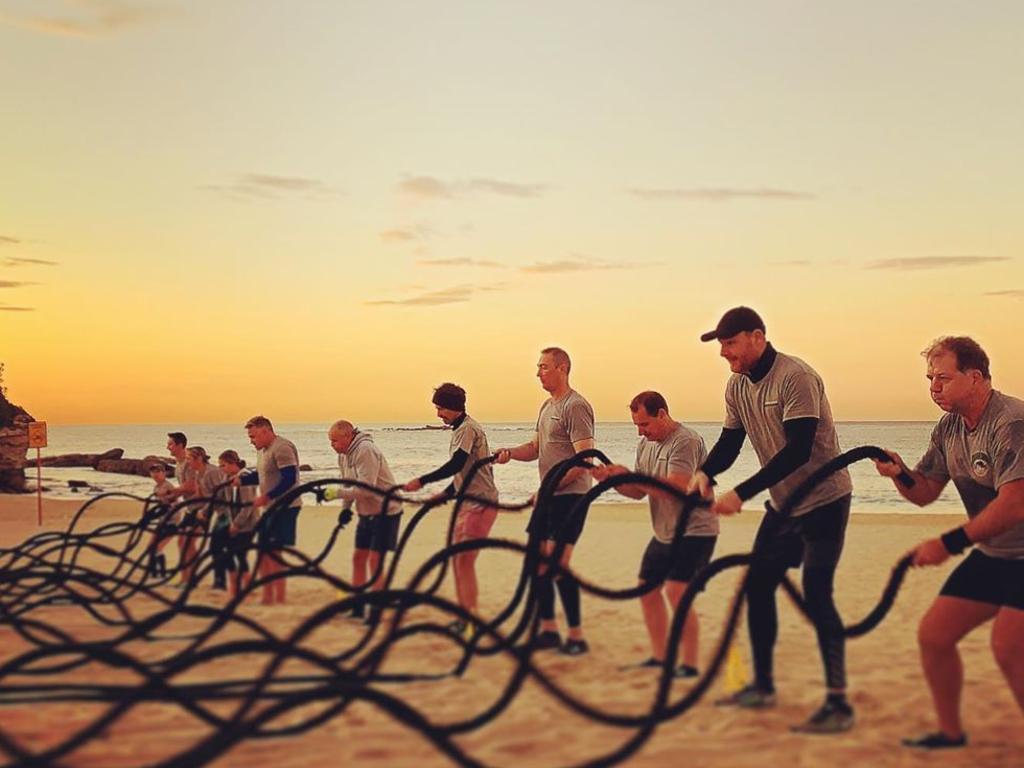Coronavirus: Can the way you breathe ease a COVID-19 cough?
J.K. Rowling says a breathing technique helped her recover from coronavirus-like symptoms. We ask the experts how respiration can affect your health.

Inhale. Exhale. Given that it is something we can do in our sleep, you might have thought we had cracked the mechanics of breathing, yet it had become another lingering coronavirus anxiety even before JK Rowling’s retweet of a YouTube breathing practice compounded our concerns.
In her post Rowling urged her Twitter followers to try a technique demonstrated by Dr Sarfaraz Munshi at Queen’s Hospital, Romford, in a video that then went viral. It “costs nothing, has no nasty side effects, but could help you/your loved ones a lot, as it did me,” the Harry Potter author wrote, claiming tat the exercise helped her to recover from symptoms of COVID-19.
It poses the question of whether we should all try breathing better as a method of insurance for our health — but how?
Exploring the business of breathing and the bewildering number of apps and exercises, techniques and tutorials can leave you gasping. There is also a booming market for respiratory training devices that beef up your breathing muscles and for monitors that track your breathing function and rate. If the whole inhalation/exhalation thing is really so complicated, how did we get this far?
There are suggestions that certain breathing methods will oxygenate the blood more effectively, promote healing and lead to improvements in fitness, stress levels and immunity. Deep breath.
“A lot of it is a load of nonsense,” says Dr John Dickinson, the head of the exercise respiratory clinic at the University of Kent at Canterbury, England, and a man who has helped Olympic athletes to control their breathing for performance.
“Your body is designed to breathe for you and generally the more you think about it, the more tense you become, which doesn’t help.”
Dickinson says that the No 1 rule is to relax into a breathing pattern that feels right. “Your breathing should be unrestricted,” he says, although there are ways in which we can make the whole process more efficient.
Breathe using your abs
Most of us instinctively involve our chest, shoulders and neck in breathing when the movement should come from our abdomen. “What we should actually try to do is move the ribcage to the sides, forward and up in a smooth movement that is effortless and doesn’t feel jerky,” Dickinson says.
A 2020 Cochrane review of 22 studies that looked at breathing exercises including yoga, diaphragmatic breathing and the Buteyko method, reported that they may have positive effects on hyperventilation symptoms and lung function in adults with mild to moderate asthma. Dickinson says such breathing helps the lungs to fully expand, but warns, “Don’t just push your stomach out when doing it. Place your hands on your lower ribcage and focus on breathing in to push your hands out while your chest remains still.”
Stuart Sandeman, a former international athlete and the founder of Breathpod, a London-based breathing clinic, says: “By controlling your breathing you can change the response of your autonomic nervous system. And that influences your body’s stress response as well as processes such as digestion.”
Nose or mouth?
Then there is the question of nose versus mouth. Sandeman says that while at rest and when moving around moderately we should try inhaling and exhaling through the nose. “The functionality of the nose is to clean air as much as possible before it enters the body. Its purpose is to support our respiratory system.”
The nostrils and nasal passageways work to filter allergens and pollutants from entering the lungs, with cilia, the microscopic nasal hairs, sweeping away larger particles to keep air passages clean. Ironically, facemask wearers tend to start breathing through their mouths, just because it is more comfortable. “But the mouth offers no such protection,” Sandeman says. “Your nose mimics some of the filtering effects of a mask.”
Nose breathing also warms and adds moisture to inhaled air, which aids entry to the lungs. It’s worth training yourself to do it if you are a regular mouth-breather. And if you snore or wake up with a dry mouth, you are probably mouth-breathing at night, in which case, Sandeman says, “mouth taping” — putting tape over the lips to assist with nasal breathing — is a somewhat extreme-sounding but widely accepted option that he sometimes recommends to clients.

Breathing when exercising
Most people breathe through their mouths when exercising, and, in a 2019 study published in the International Journal of Kinesiology and Sports Science, researchers at Colorado State University found that doing so increases the ratio of oxygen to carbon dioxide in the bloodstream — good news for working muscles. Besides, Dickinson says, “If you attempt to breathe through your nose when exercising at any intensity beyond perhaps a very slow jog it is impossible. For most people, mouth-breathing during exercise is not problematic because the physical activity is temporary and short-term.”
Exercise is also the single most important thing we can do to improve our breathing. Contrary to what you may think, being born with big lungs is not a prerequisite for super-fitness and we can all improve our breathing efficiency with aerobic exercise.
“Your lung capacity is pretty much set genetically and depends on what your parents have blessed you with,” Dickinson says. “But even top athletes can have quite small lungs and develop very good lung function. What matters is how well you get air in and out of the lungs, not their size.
“Consistently exercise aerobically and you increase the blood and oxygen supply to your lungs. Adaptations occur around the body so that your muscles become more efficient at using oxygen and your breathing gets easier.”
With present limitations on outdoor exercise, how fast do these effects fade? “A week or two off exercise won’t make much difference,” Dickinson says. “Longer than that and there can be a detraining effect.
“You can offset this in lockdown with home workouts such as HIIT (high-intensity interval training — sessions that simulate longer aerobic activity in terms of fitness gains.”
No coughing, JK
So what about those people in lockdown who have symptoms of COVID-19? The technique promoted by Rowling — two cycles of five deep breaths, a forceful cough (covering the mouth) after the sixth deep breath has ended, then lying flat on your stomach and breathing deeply for 10 minutes — is not dissimilar to those used by respiratory doctors for other illnesses, although the video attracted some criticism.
Last week, Michael Niederman, a professor in the pulmonary and critical care centre at Weill Cornell Medical College in New York, told New Scientist magazine that coughing at the end of the breathing cycle is useful for clearing out mucus, but less so for the dry cough symptomatic of COVID-19. Critics have also warned that the practice may spread infection through dispersed droplets.

Should I lie on my front?
Turning COVID-19 hospital patients on to their fronts is a technique being used by specialist medical staff in hospitals to increase oxygen flow to the lungs. With the organs located behind the heart, towards the back of the body, it releases pressure on the lungs and aids breathing. So should you try it at home if you have a dry cough symptomatic of COVID-19?
Dickinson says there’s no evidence that it will help those with mild symptoms. “If you feel lying on your front helps your breathing patterns, that’s fine,” he says. “But a lot of people find front-lying uncomfortable and lying on the back can have the effect of unloading the respiratory muscles and helping you to relax, so you might find that better.” If you have a dry cough, try breathing through your nose. “It will help to humidify the air before it reaches your lungs,” Dickinson says. “With athletes who have a dry cough we recommend a spoonful of honey to alleviate the dryness, so that is also worth a try.”
For those free of symptoms, deep breathing may bring some benefits that will help during the pandemic. A study by Chris Streeter, an associate professor of psychiatry and neurology at Boston University in the US, found that 12 weeks of daily yoga involving slow breathing at five breaths a minute reduced symptoms in people with depression and raised their levels of gamma-aminobutyric acid, an anxiety-reducing neurotransmitter.
“When you take slow, controlled breaths your brain gets the message that there’s nothing to fear and activates the parasympathetic response, which promotes a sense of calm,” Sandeman says. “The release of stress hormones is reduced and our brains are effectively rewired. It changes the way you feel.”
The Times







To join the conversation, please log in. Don't have an account? Register
Join the conversation, you are commenting as Logout